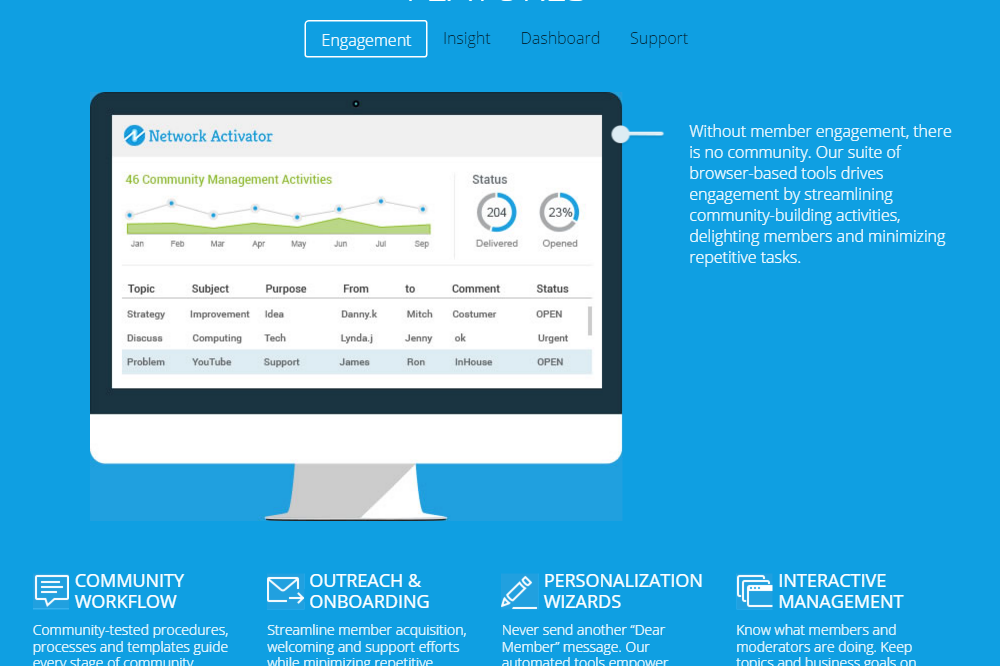Your B2B firm trumpets its engaged, active customers. These customers, the sweet center of any successful business, generate a significant portion of your firm’s revenue. These same customers serve as references; speak at industry conferences; share ideas and feedback about your company. When they broadcast positive feedback (public or private), that precious message makes the rounds in your firm’s C-suite. In return, these customers will be thanked with some great company swag in appreciation … maybe even be featured on your company’s website.
Is that all? Really?
With all that back-and-forth communication, how often do customer suggestions and ideas actually make a difference in your company? More specifically, how often does what your customers say to your firm about your company’s processes, products or services serve as a catalyst for real change in your operations? I thought so. But really, how could it?
Many large organizations have created what I like to call a “Social Media Muddle.” They have a plethora of social media tool experiments underway: newsletters and blogs for customer communications, twitter and Facebook for customer interaction, LinkedIN for promotions, sometimes even an online customer community to provide all of the above and more. But … all these different social outreach and listening opportunities are run by different departments, and are completely and utterly divorced from core operations and processes. Product development, customer care and & most likely do not have direct access to information they crave – the voice of the customer.
So while your customers are actively sharing information about their needs in many places – public and private, online and offline – your company keeps on keeping on, just doing things according to plan. A plan that is not adjusting and adapting to ever-changing customer needs.
Here’s a common example: How many times have you gone hunting for a technical solution in a company’s customer care forums? You may have found dozens of postings, reams of information, customer inquiries and discussions that span multiple threads, some lasting months or even years. Eventually, someone (usually a customer – not the company!) suggests a righteous fix that really works. All those searching for a similar solution are generally happy. Once in awhile, a few staff in the support call center may point people to that solution, if they know where to look and have been paying attention. This scenario plays out time and again for all manner of products and service, some well-establish, some brand new. But does the underlying product undergo a bug fix, enhancement or redesign as a result? Is an entirely new product or service fast-tracked into testing based on this priceless feedback? Probably not. Why not?
When customer interactions are fragmented throughout the firm, the typical B2B organization’s core operations have little chance of being responsive to customer needs. Absent an interactive customer communications strategy that reaches from the edge of the distribution channel into the heart of your firm’s innovation, production and supply processes, your core operations won’t be able to respond.Of course, the customers don’t know, or even care, about your firm’s creaky processes. They’ve spoken to you. They expect outcomes or, at the very least, acknowledgement of the issue.
Accountability is the name of the game and B2B customers are coming to expect it. Consumers are already there. Remember the iPhone 4 antenna-gate debacle? In seven days, “bad social” feedback cost AAPL $12B in market cap. Did they make it back? Sure, with a surly Steve Jobs saying nothing’s wrong but we’ll acknowledge your complaint with a rubber case. Imagine how a less nimble, less responsive firm might have fared? Then again, there was Apple Maps earlier this year …Another consideration: Isolating customer interactions from core process can allow customers to game the system. Some frequent flyers – that’s me, folks — “work” multiple channels to get what they want. The online systems and the call centers are completely unconnected, and there is no record of me as a customer that is shared across the channels. To improve the price for a ticket or get an upgrade, pure persistence coupled with a multi-channel strategy will eventually yield a better result. I am depending on the airline’s failure to achieve customer integration with core operations to save me money. I doubt there’s a line on the airline’s strategic pricing map that reads: “create variable pricing wormholes to delight persistent customers through multi-channel inconsistencies!”
So here’s to all you B2B organizations (except airlines — I love the savings operational confusion gives me), isn’t it time to get your customer interactions moving in the same direction? It’s time you started connecting your core operations to respond to the commands your customers are giving you. And in honor of the recent inauguration ceremonies, I’ll repurpose a useful concept: “Ask not what your customers can do for you. Ask what you can do for your customers!
Warning: Attempt to read property "base" on array in /home3/trusten9/public_html/leadernetworks/wp-content/plugins/wp-user-profile-avatar/shortcodes/wp-user-profile-avatar-shortcodes.php on line 665
Warning: Attempt to read property "base" on array in /home3/trusten9/public_html/leadernetworks/wp-content/plugins/wp-user-profile-avatar/shortcodes/wp-user-profile-avatar-shortcodes.php on line 665
Warning: Attempt to read property "base" on array in /home3/trusten9/public_html/leadernetworks/wp-content/plugins/wp-user-profile-avatar/shortcodes/wp-user-profile-avatar-shortcodes.php on line 665
Warning: Attempt to read property "base" on array in /home3/trusten9/public_html/leadernetworks/wp-content/plugins/wp-user-profile-avatar/shortcodes/wp-user-profile-avatar-shortcodes.php on line 665
Related Posts
July 10, 2018
How To Increase User Engagement in your Online Community
Every member goes through four stages of activity within an online community:…
December 15, 2015
Why Inclusive Marketing should be on Your Agenda for 2016
Your guide to doing inclusive marketing - the right way!
October 26, 2015
Online Community Managers: A Tool of Our Own!
For years, social media marketers have had tools like Hootsuite, Sprinklr, and…
1 Comment
Add comment Cancel reply
This site uses Akismet to reduce spam. Learn how your comment data is processed.




Hi Vanessa, great post. The two key messages for me are:
1) Integration of consumer data across departments and cross departmental collaboration
2) The importance of social data in R&D and product development
For too long now, some core departments have been forgotten when it comes to social media engagement and feedback. As you mention, with the majority of social efforts being stuck in the “social media middle” sometimes the huge opportunity for social listening is wasted and R&D and product development can’t benefit from the type of feedback from customers that they crave.
I recently wrote a few starting points on using social data for product development that you might find interesting:
http://www.bloomsocialbusiness.com/social-listening-for-innovation/
Thanks for the thoughts,
Laura
@lauradinneen